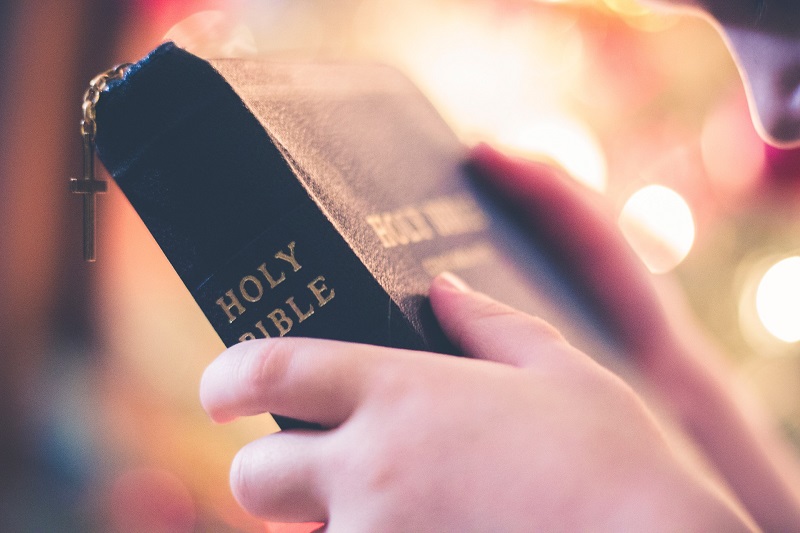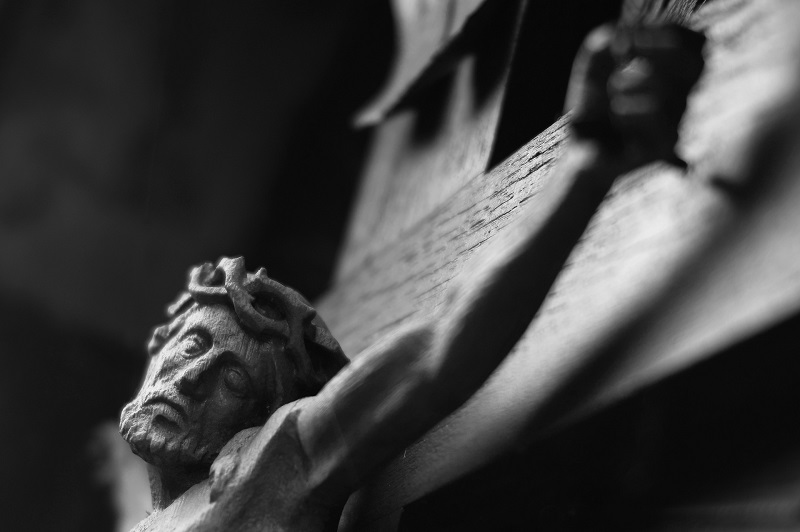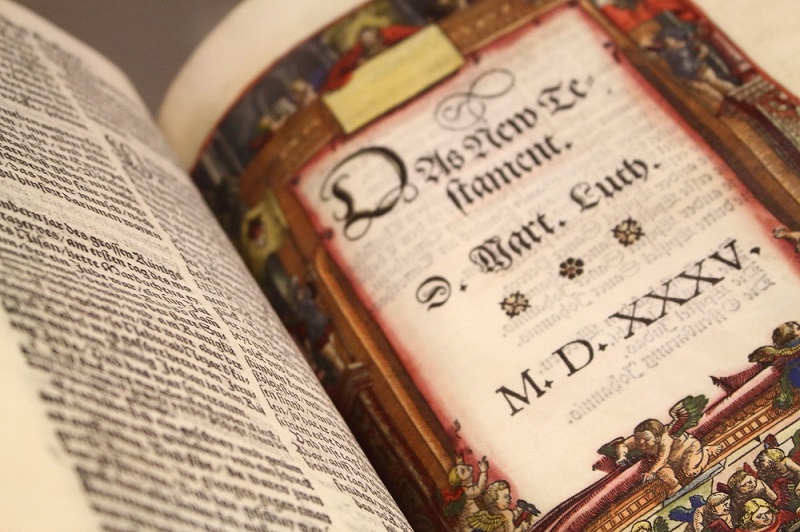Christianity, in its many different variations, has been around for thousands of years. It is the world’s largest religion, with around 2.1 billion followers across the globe.
Though an integral part of modern culture, the intricacies and history behind Christian faith can be confusing. With such a broad range of varying denominations, each with its own set of beliefs and related principles, it is difficult to fully grasp the messages and events that form the foundation of modern Christianity.
In this guide, we’ll be clearing the fog, running through everything you need to know about Christianity.
Christianity at a Glance

Before delving deep into the specifics of Christian faith, let’s first take a glance at some of the key facts and principles pertaining to the religion.
- The Christian book is The Bible, which is split into two parts: the Old Testament and the New Testament.
- Christians believe that Jesus was the Messiah, the promised deliverer of the Jewish nation, as prophesized in the Old Testament.
- Christians believe Jesus Christ to be the Son of God, sent to earth to save humanity from the consequences of its sins.
- Christians believe that only one God exists, but that this God is comprised of three beings: The Father, The Son, and The Holy Spirit.
Of course, Christian faith goes far deeper than these simple principles – these are just five distinctive points that distinguish Christianity from other religions.
The History of Christianity
The history of Christianity, as told in the Bible, focuses primarily on Jesus’s birth, life, and death. Traditional accounts tell of the birth of Jesus in a stable in Bethlehem, born to a young virgin named Mary who was impregnated through the actions of the Holy Spirit.
The Life of Jesus Christ
The story of Jesus’s birth is told through the books of Matthew and Luke, which can be found in the New Testament of the Bible. His birth is the realization of prophecies told in the Old Testament, which predicts the coming of the Messiah whose responsibility would be to end oppression and establish the perfect Kingdom of God.
During the priod after his birth, little is known about Jesus’s life until he reached around thirty-years-old. At this age, his ministry began with his baptism near the River Jordan.
Shortly after John the Baptist’s christening of Jesus Christ, Jesus fasted for 40 days and 40 nights in the Judaean Desert, where Satan appeared to Jesus and tried to tempt him with food and drink. After having resisted these temptations, he returned to Galilee to spread the word of God.
In Galilee, Jesus spent some time preaching and recruiting his first disciples. These disciples continue to travel with Jesus, forming the heart of the early church.
When Jesus first began his ministry, he did not publically refer to himself as the Messiah out of fear that it would be too dangerous. The Messiah was prophesized to arrive during the End Times, a period of extreme desperation and crisis, to overthrow any evil oppressors and establish the perfect kingdom upon earth. Authorities may, therefore, have seen Jesus as a threat to their power and persecuted him in response.
Despite Jesus’s silence, his miraculous cures and teachings soon began to attract a lot of attention. Within a short period of time, many of the people of Galilee began to think that he may be the Messiah prophesized in the Old Testament. As a result, when Jesus and his disciples traveled to Jerusalem to attend the Passover festival, they were accompanied by a large group of followers who were expecting the new perfect Kingdom of God to materialize at any moment.
It is these miracles and Jesus’s large following that led Roman authorities to assume that Jesus had come to destabilize them. His crucifixion and subsequent death occurred as a result.
The Death of Jesus Christ

The crucifixion of Jesus Christ occurred in 1st-century Judea. Referred to as the Epistles of the New Testament, this crucifixion is detailed in all four of the canonical gospels of Matthew, Mark, Luke, and John. It has even been established as a historical event, confirmed by non-Christian sources.
The reason for Jesus’s sentencing to death was simple: his growing power presented itself as an enormous threat to Roman authorities. These leaders saw the immense crowds gathering around Jesus, worshipping him, aware that many people believed him to be the Messiah. As is written in Mark 11:18, “they feared him, because the whole crowd was amazed at his teaching.”
Initially, these religious leaders arrested Jesus because “they were afraid of the crowd”, says Mark 12:12. Soon after, they decided that the only solution to the supposed threat of the Messiah was to execute him. With the assistance of Judas Iscariot, the authorities seized Jesus Christ late at night when there was no crowd to protect him.
After interrogating Jesus until the early hours of the morning, Jesus was handed over to the Romans. He was convicted for breaking their laws and claiming to be the king, punishable by crucifixion.
Jesus was sentenced by Pontius Pilate to be scourged and finally crucified by the Romans for claiming to be the ‘King of the Jews’. Jesus was stripped of all of his clothes and hung on a cross between two convicted thieves, dying around six hours later (according to the Gospel of Mark) in Golgotha, just outside of ancient Jerusalem.
The Resurrection of Jesus Christ
The resurrection of Jesus Christ forms the foundation of Christian faith. Without it, the belief in God saving grace through his son is destroyed. When Jesus rose from the dead, he finally confirmed his identity as the Son of God, the Messiah, explaining his purpose – to atone humanity of its sins.
It is believed that three days following the death and burial of Jesus, Mary Magdalene and another Mary came to visit the tomb only to find it empty. Sitting on the nearby stone that had been rolled away was an angel, instructing Mary and her companion not to be afraid, for Jesus had risen from the dead.
According to the New Testament, after Jesus was crucified by the Romans and buried in a tomb next to a man named Joseph of Arimathea, he was raised from the dead by the hand of God himself.
The resurrection of Jesus Christ is now celebrated on Easter Sunday – two days after Good Friday, the date of his crucifixion.
The Denominations of Christianity Explained
Although the Biblical accounts of Jesus’s birth, life and death are coherent, there are many different interpretations of them. The ways in which the Bible’s contents have been perceived throughout history have led to the formation of many different Christian denominations – schools of thought founded upon varying interpretations of the same themes.
The most notable and widely-practiced denominations of Christianity are the Church of England and Catholicism, but there are many others to be considered. Before we take a look at these two major schools of faith in more detail, let’s first examine the historical event that led to the creation of many different bodies of Christianity: The Reformation.
The Protestant Reformation

The Protestant Reformation was the 16th-century religious and political event that led to the upheaval of the Catholic Church. It was around this time that reformers such as Martin Luther, John Calvin and Henry VIII began questioning the ability of the Catholic Church to dictate Christian practice.
These figures, amongst others, argued in favor of the redistribution of power into the hands of the Bible rather than those of the papacy. This desire for change was driven by a number of dubious practices that were being conducted by the Catholic Church, such as:
- The Bible was being printed solely in Latin, meaning the only priests versed in the language had the authority to deliver scriptural messages to churchgoers. People were, therefore, unable to confirm whether their priests were delivering accurate translations or biased interpretations.
- The church was selling documents called Indulgences – forgiveness for their sins in exchange for money. Rich people would buy their way into heaven in spite of their wrongdoings, while poorer Christians were unable to afford Indulgences. According to the Gospel of Matthew, the act of selling forgiveness goes against God’s will.
- Religious posts were being sold to whoever was willing to pay the largest sum of money for them. Priests didn’t have to be well-educated in Christianity as much as they needed enough wealth to buy their way into the church. They taught people many different things, often bearing little resemblance to the true contents of the Bible.
Around 1515, the Pope began a new Indulgence campaign in an attempt to raise money for the church to rebuild St Peter’s Basilica. This was the last straw for Martin Luther, a Catholic Monk from Germany already growing tired of the unethical practices of the Catholic Church.
On October 31st, 1517, Luther wrote ‘95 theses’ against these practices, nailing them to the door of the Wittenberg Chapel. As a result, he was excommunicated and branded as an enemy of the Pope. Although Luther hadn’t intended to separate the Catholic Church, only to reform it, his actions spearheaded The Protestant Reformation, whereby the Church of England began as a separate religious body.
Germany and Lutheranism
Martin Luther was an Augustinian monk and lecturer in Wittenberg when he composed his famous 95 theses, protesting against the Pope’s sale of indulgences and other practices. After his excommunication from the church, Luther went on to translate the Bible from Latin to German in order to make it more accessible to practicing Christians.
By Luther’s end, Lutheranism became the state religion throughout a number of countries, including Germany, Scandinavia and the Baltics.
The Reformation In England
In England, the reformation began with Henry VIII’s quest for a male heir. After Catherine of Aragon gave birth to their daughter, Henry wished to divorce her and remarry – a request that Pope Clement VII refused as it went against Catholic doctrine.
Refusing to accept the Pope’s rejection, the King of England declared that he himself should be the final authority on matters relating to the English church. Henry VIII went on to dissolve all of England’s monasteries and sought to place the Bible back into the hands of the people. From 1536, every parish was required to have a copy, and the monarchy would have the final say on any matters relating to C of E doctrine
The Church of England
During the Reformation, the Western Church became divided between those who continued to accept papal authority and the Protestant churches that didn’t. The Church of England was one of those that renounced its ties with Rome.
The catalyst of this decision was the refusal of the Pope to annul the marriage of Henry VIII, as well as a Tudor nationalist belief that authority over the English church rightfully belonged to the monarchy.
Following Henry VIII’s reign, the Church of England continued to change, ebbing and flowing between the pressures of the Protestants and the authority of the Catholic Church. These changes were solidified when Elizabeth I took to the throne in 1558, giving the Church of England the distinctive identity that it has today.
The Catholic Church

Also known as the Roman Catholic Church, the Catholic Church is the largest Christian denomination, with 1.3 billion baptized Catholics recorded in 2017. Described as the world’s ‘oldest functioning international institution’, the church has played a significant role in the development of Western civilization.
The church is headed by the Bishop of Rome, more commonly known as the Pope, and its central administration is situated in the Vatican City. Modern Catholic theology is based upon the Nicene Creed. It aims to teach that the Catholic Church is the one, holy, Catholic and apostolic church founded by Jesus Christ.
Catholicism maintains that it practices the original Christian faith, reserving the idea that the word of the Pope is infallible and that its religious principles are passed down from sacred tradition.
What Are the Key Differences Between Modern Catholicism and Church of England?
In the modern world, the divide between Catholicism and the Church of England still exists, but the differences between these two schools are lesser known. There are four key factors that enable us to distinguish one from the other. These are:
Origins of the Religion
As we have discussed, the origins of Catholicism and C of E differ greatly. During the 16th-century, King Henry VIII declared independence from the Catholic Church with the Church of England, establishing it as a separate body.
The Catholic Church, on the other hand, was started when the apostles of Jesus Christ began to preach his word. During the 4th-century AD, the Roman emperor Constantine adopted Catholicism as the official religion of the state.
How Each Religion is Defined
The word ‘Catholic’ comes from the Greek word meaning ‘universal’, marking it as the first and longest-lasting form of Christianity. The Church of England is also referred to as ‘Anglican’, with branches spanning across the world.
Leadership
The Anglican Church does not depend upon a central hierarchy that places the church or priest above all others. Instead, each individual church has the freedom to decide upon a central policy. While the Archbishop of Canterbury is considered the first among equals, this does not give him authority over churches outside of his region.
The Catholic Church, on the other hand, has a fully entrenched hierarchy. At the bottom of this hierarchy are parish priests, followed by the bishops, archbishops, cardinals and lastly the Pope himself. The Pope is elected by the cardinals and is believed to be the direct successor of the apostle Peter. The Pope is also believed to be infallible on all matters pertaining to Catholic doctrine.
Beliefs and Practices
Anglican priests are allowed to marry. Parishioners receive communion, but believe it to be a symbolic act rather than a physical one. The mass ceremony contains a lot of different scents and bells using incense.
Catholic priests, on the other hand, are required to take a vow of celibacy – the same holding true for monks and nuns. Communion is also believed to be a physical act, whereby the bread and wine actually become the body of Christ for a moment, rather than merely being a symbolic representation as Anglican belief suggests.
Christian Traditions
Christianity is characterized by a range of holidays which have even been adopted by a number of secular states. Let’s run through the stories behind two of the most commonly celebrated religious events: Christmas and Easter.
The Tradition of Christmas

Christmas is celebrated in many nations worldwide on December 25th (and January 7th for Orthodox Christians). It is a holy day that marks the birth of Christ.
The Story of Christmas
Jesus’s birth, known as the Nativity, is described in the New Testament of the Bible. The Gospels of Matthew and Luke give different accounts of the events of the birth, and it is from each of these that the full story is put together.
Both accounts describe Jesus as being born to a virgin woman named Mary, engaged to a carpenter called Joseph. According to Luke’s account, Mary received a visit from an angel bringing a message that she would give birth to the Son of God. Matthew’s account tells that Joseph was visited by an angel persuading him to marry Mary rather than exposing her to pregnancy.
The Gospel of Matthew described three wise men following a star that led them to Jesus’ birthplace, presenting gifts of gold, frankincense and myrrh. Luke’s gospel tells of shepherds being led to Bethlehem by an angel.
To clear up the confusion surrounding variations in the canonical gospels, Christian tradition describes Joseph and Mary traveling to Bethlehem shortly before the birth of Jesus, Joseph being ordered to partake in a mandatory census in his home town.
Joseph and Mary traveled for 90 miles from Nazareth, along the valley of the River Jordan, on the back of a donkey. Yet, when they arrived in Bethlehem, all of the local inns were full with people forced to return for the census. And so, as the story goes, the innkeeper allowed Mary and Joseph to stay in the rock cave below his house which was being used as a stable to keep his animals.
There, a baby Jesus Christ was born and laid in a manger. The tradition of Christmas celebrates his birth.
The Tradition of Easter

According to the Bible, the death and resurrection of Jesus Christ occurred around the time of the Jewish Passover, traditionally celebrated on the first full moon following the spring equinox.
This soon resulted in Easter being celebrated on different dates, with some churches celebrating it on the day of the Passover and others on the following Sunday.
The Story of Easter
Easter Sunday marks the resurrection of Jesus. The gospels record that, after Jesus had been crucified, his body was removed from the cross and buried in a cave guarded by an enormous and unmovable stone.
Three days later, on Sunday, the stone had been moved and Jesus’s body had disappeared. He was seen later that day by Mary Magdalene, and once again 40 days later by his disciples. This event is referred to as the Resurrection. Christians believe that God raised Jesus from the dead as a sign that his sacrifice had been accepted and humanity’s sins forgiven.
Summary
When looking at the intricacies of the history that lies behind Christian faith, it becomes clear that there is far more to the religion than most of us might think. It can be confusing at first – understanding the differences between different denominations, the doctrines they support and the reasons for existence.
By starting from the beginning, with the birth of Christ, and working our way towards modern day Christianity, the fog clears. No longer is the religion confusing, but rather a collection of open, honest and helpful beliefs about the life and death of figure renowned worldwide, by religious and secular people alike, named Jesus Christ.





